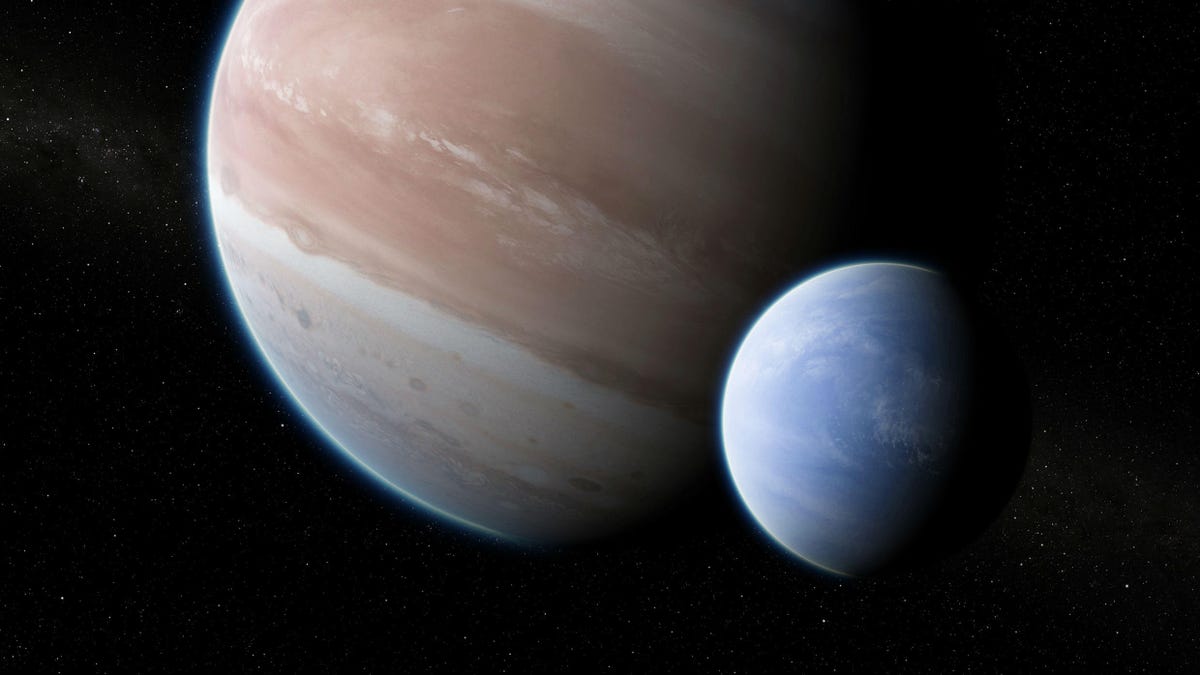Hunt for first 'exomoon' zeroes in on top prospect of surprising size
Our solar system is filled with dozens of moons, but we've never seen one around another star... until now, possibly.

It's become accepted that the universe is filled with exoplanets orbiting distant stars, but astronomers have yet to confirm the existence of any "exomoons" around a far-off world.
That may be about to change, thanks to some new data collected with NASA's Hubble space telescope that points to the possibility of a moon at least 10 times the size of Earth's circling a larger gas giant in a star system some 8,000 light-years away. The exomoon could provide new hints to how planets and solar systems form.
"If validated, the planet-moon system, a Jupiter with a Neptune-sized moon, would be a remarkable system with unanticipated properties, in many ways echoing the unexpected discovery of hot Jupiters in the early days of planet hunting," Columbia University astronomy professor David Kipping told reporters on a conference call Monday.
Artist's impression of the exoplanet Kepler-1625b transiting the star with the candidate exomoon in tow.
Kipping and National Science Foundation graduate fellow Alex Teachey reported their findings in a paper published Wednesday in the journal Science Advances.
The team has been investigating the exomoon candidate for over two years now, since it was first identified from Kepler space telescope data. Initially, they used a variation of the technique that has helped astronomers discover many exoplanets in recent years. It involves looking for the slight dimming of light from a star caused by a planet passing in front of it, called a transit.
The scientists looked at data from 284 transiting exoplanets in search of anomalies that might suggest the presence of something else tagging along as the yonder worlds passed in front of their stars. They saw something unusual with the planet Kepler 1625b.
"We saw little deviations and wobbles in the light curve that caught our attention," Kipping said.
More specifically, right after the planet passes in front of the star, it looks like it's followed by a smaller object.
The team got observation time with the Hubble Space Telescope to check their suspicion that the wobbles they saw could be caused by a moon around the Jupiter-sized planet. Teachey explains in more detail how Hubble was used to analyze the light data from the star and how the team tested its exomoon hypothesis in the video below:
After comparing the Hubble data against a few possible explanations, or models, the exomoon remained the best fit, but Kipping and Teachey caution that there are still issues with the hypothesis. For example, the Hubble observations were unable to catch the full transit of what appears to be an exomoon.
"Ultimately, we think this object really deserves to be observed again," Teachey says.
Kipping also stresses that the exomoon is still just a hypothesis that requires further confirmation.
"We're not quite there yet," he says. "We've tried our best to rule out other possibilities such as spacecraft anomalies, other planets in the system or stellar activity, but ... It's the unknown unknowns, which are ultimately uncharacterizable. We hope to re-observe the star again in the future to verify or reject the exomoon hypothesis."
Both encourage other scientists to check their work and conclusions while we all wait for the next time the hypothetical exomoon can be observed again in May 2019.
NASA turns 60: The space agency has taken humanity farther than anyone else, and it has plans to go further.
Crowd Control: A crowdsourced science fiction novel written by CNET readers.

